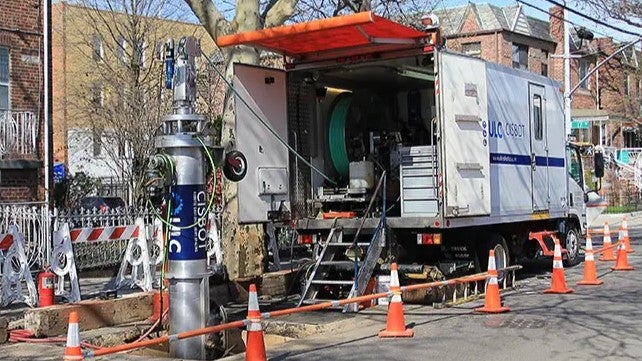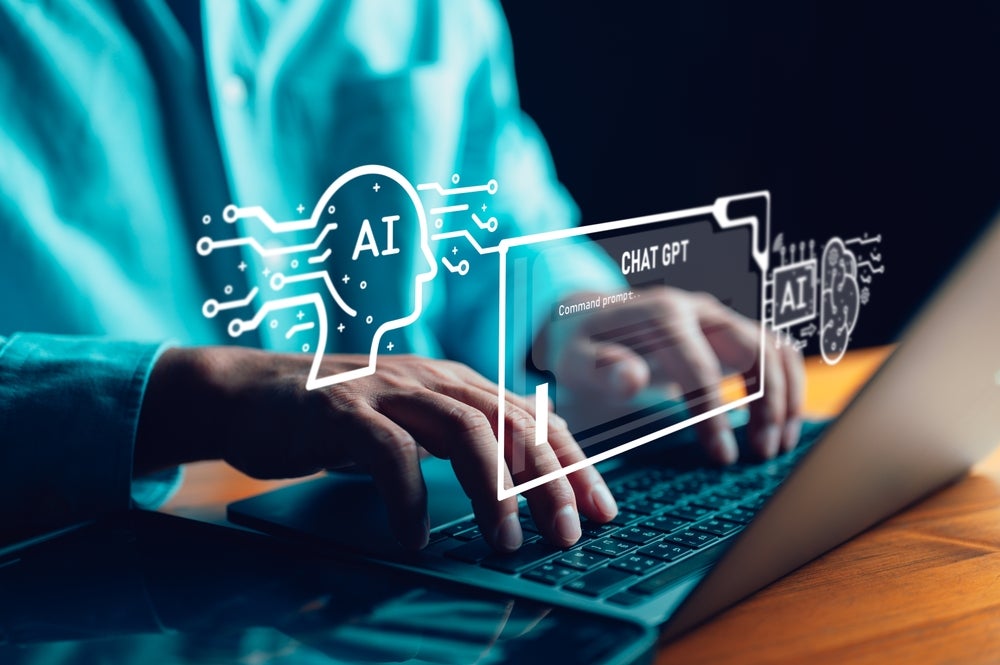
The global energy industry is moving swiftly away from fossil fuels, and new technologies are replacing traditional means of generation and transition.
The Earth is already approximately 1.1°C warmer than it was in the late 1800s, and emissions must be reduced by 45% by 2030 if global warming is to remain under 1.5°C, as called for in The Paris Agreement. Signed by 194 parties, signatories have pledged to reach net zero by 2050, creating a growing demand for rapid, safe and affordable installation, as well as maintenance and replacement as renewable technologies continue to evolve.

Access deeper industry intelligence
Experience unmatched clarity with a single platform that combines unique data, AI, and human expertise.
This renewable energy market is taking shape alongside the rapid evolution of the robotics industry, and the two are proving complementary. According to GlobalData figures, the robotics industry was worth $63bn in 2022 and will grow to be worth $218bn by 2030. Globaldata’s recent Robotics – Thematic Intelligence report states: “The power and utilities segment … is a key sector that intends to use drones for inspection purposes.”
ULC Technologies
New York-based robotics developer ULC Technologies is one of the companies already offering robotics solutions to energy-sector challenges, specifically in infrastructure installation and maintenance. The company develops robotic technologies including unmanned aerial systems, machine learning and inspection services, to address the specific pain points of their clients.
Historically, it has been best known for CISBOT, an industry-leading robotic cast ion joint sealing solution for gas line maintenance. The technology reached the 50,000 joint remediation milestone in March 2023.
CISBOT provides remediation for companies facing challenges maintaining assets. Many pipes were laid during the Victorian era, and the move to natural gas in the 1970s created unforeseen challenges. CISBOT enables gas networks to extend the lifespan of their assets, by entering mains and sealing jute joints and mechanical joints. However, ULC Technologies is swiftly adapting to a new era in energy technologies.

US Tariffs are shifting - will you react or anticipate?
Don’t let policy changes catch you off guard. Stay proactive with real-time data and expert analysis.
By GlobalDataSpeaking to GlobalData, Ali Asmari, Director of R&D at ULC Technologies, explains: “Traditionally, gas has been one of the biggest markets that we had: we created a couple of solutions for inspection and remediation of gas networks and we have been very active with our field services.
“On the R&D side, we have developed a couple of solutions that were deployed in the field, and now we are mostly providing services … Now, we are shifting gears and increasing our portfolio in renewable energies. We’re working with solar electric, offshore wind and onshore wind, and we have a lot of ongoing projects with customers that are interested in that area.”
Considering the example of the UK’s Hydrogen Strategy, which details plans to develop 5GW of hydrogen production capacity by 2030, Asmari said: “It’s very novel and it’s not possible without new technologies that at the moment don’t exist. By 2050, the goal is to use 100% renewable energy or hydrogen, so that requires a lot of new tech to be developed. We’re trying to help those customers out by developing new technologies.”
Robotic solutions
These technologies include robotic solutions, which ULC Technologies believes can streamline installation and maintenance processes, whilst removing potential risks. However, Asmari was quick to emphasize that robots in the energy industry are primarily tools to enable human labour, not replace it
“We are not trying to replace people with robots, we’re trying to provide them with better tools to improve the safety of their operation, he says. “We’re not eliminating an operator from work, we’re giving them tools to be twice as effective and twice as safer.”
Offering an example of the Robotic Roadworks and Excavation System (RRES), developed with LLC and SGN, Asmari explains: “This was an ambitious work to essentially develop a robot that does the entire excavation and remediation of assets on the ground fully autonomously.
“The traditional way of conducting these operations when there’s a gas pipe under the ground is with operators with jackhammers, breaking the road surface. Jackhammers are essentially not safe for human operators. Those that are using them will eventually see long-term effects on their health. There is an effect called vibration white finger – the vibration of the jackhammer means operators who use it continuously will start losing all the senses in their fingers, and their fingers turn white …
“We want to develop better tools so that the same operator who’s picking up the jackhammer would be able to use to upskill their level of competency. They would use these better tools, carry out that same operation more efficiently and safely.”
Artificial intelligence
RRES is being developed with machine learning, to give the robot the ability to ‘see’ its environment, using 3D visualization techniques. Artificial intelligence (AI), more broadly, will also impact robotics, and therefore the ability of robots to provide solutions to the energy industry.
“The addition of AI machine learning to all of the classical hardware that has existed before is opening up a lot of opportunities for robots to get more involved into the day to day operation … with all of these technologies and the computational powers that we have, new applications are popping up,” says Asmari.
“You see that – within the gas industry, water industry, renewable energy, construction of solar farms, construction of wind farms, offshore wind – there are more and more autonomous systems and robotics which increase efficiency. When the cost of developing the solar farm goes down, everybody can benefit from that. It means the cost of electricity is going down. That means you can use the same number of human resources that you have available but build twice as many solar farms, twice as many wind farms.”







